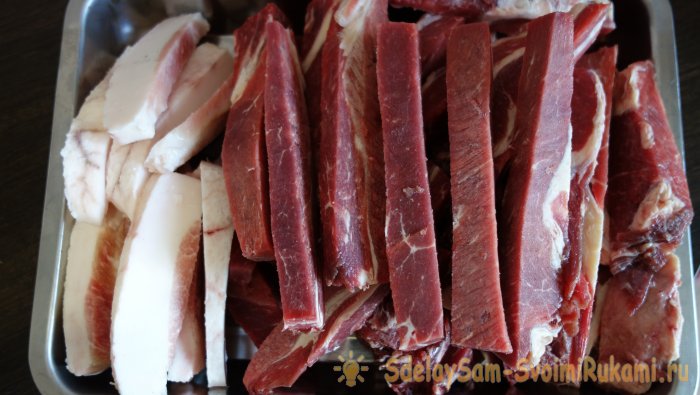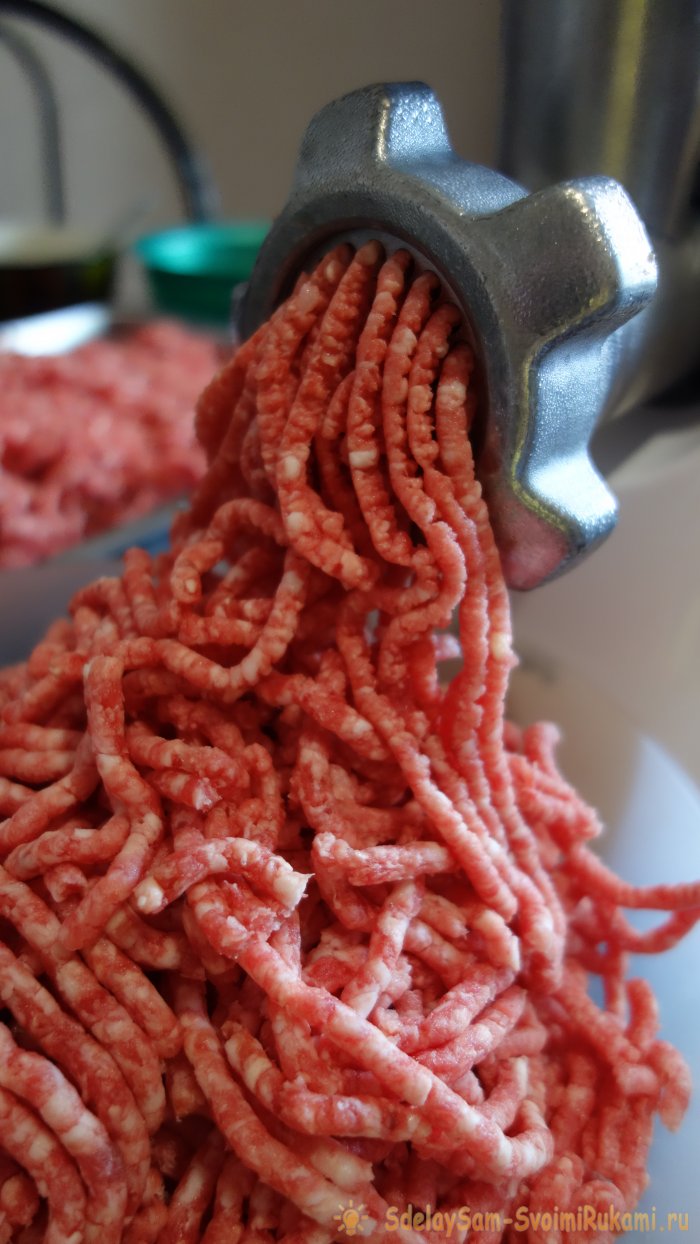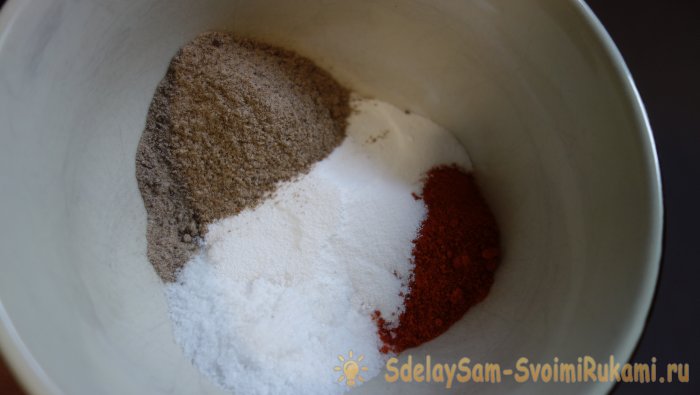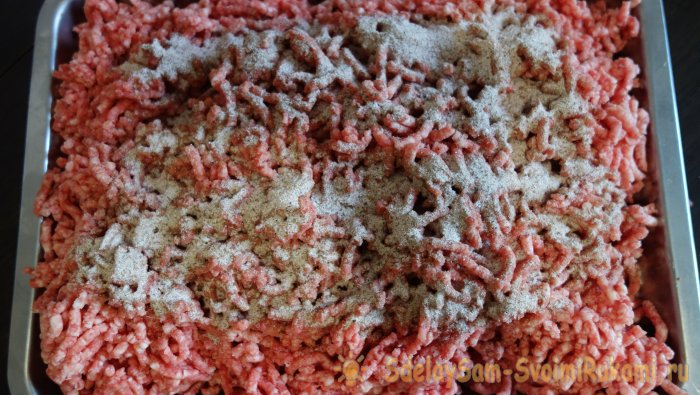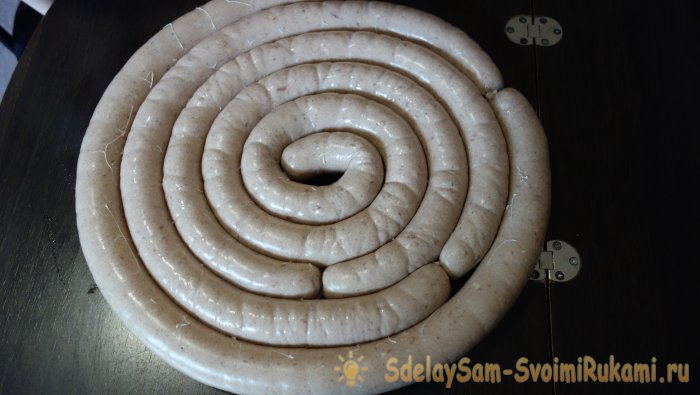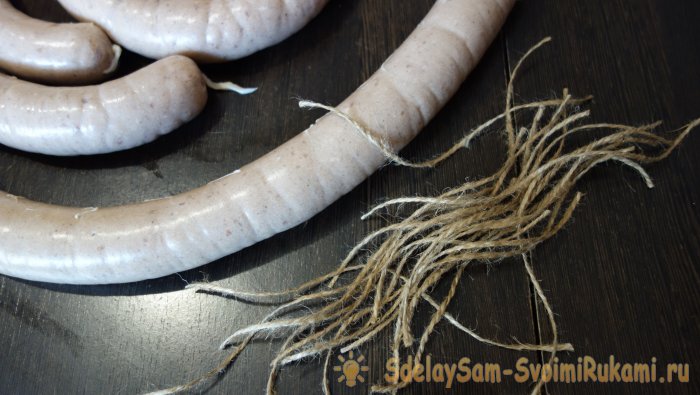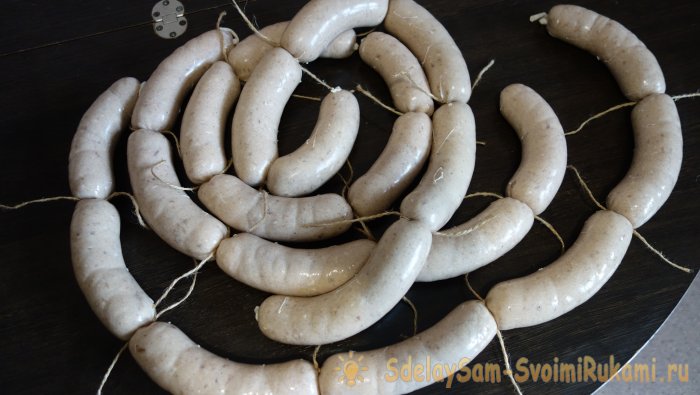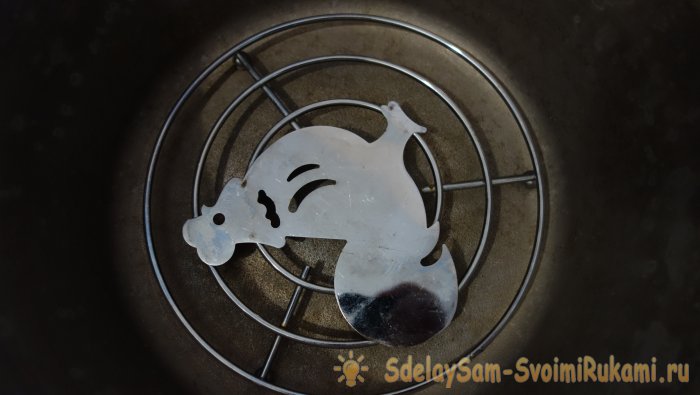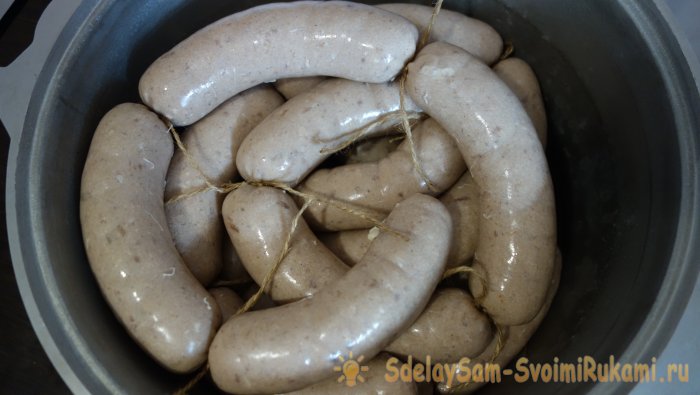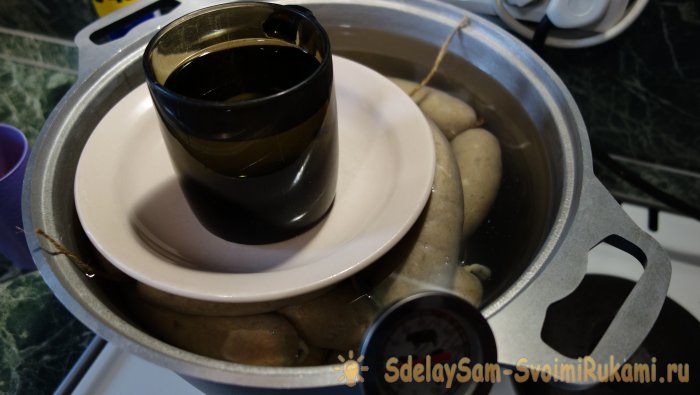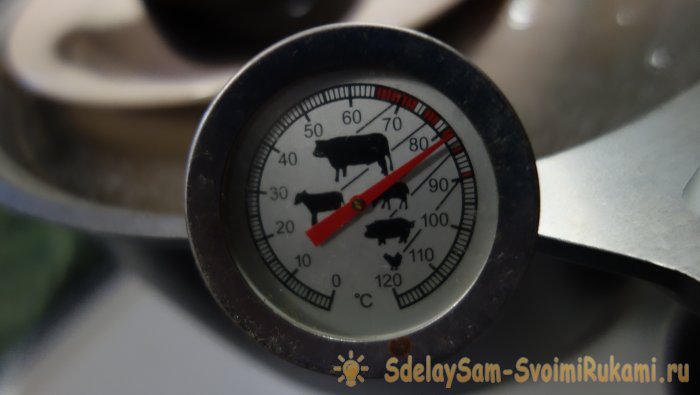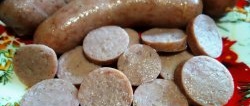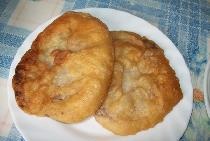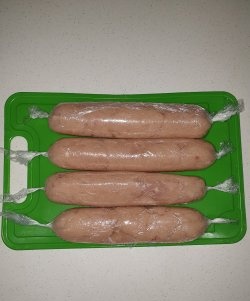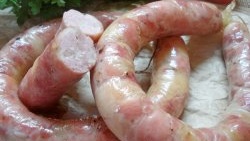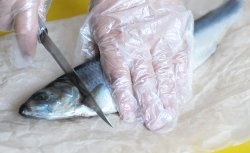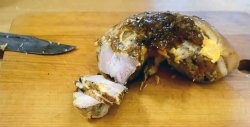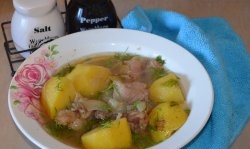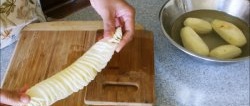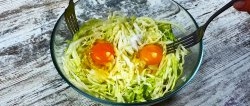Equipment and ingredients
You can prepare sausages at home in a simple or correct way. For a simple method, we only need a meat grinder with a special attachment and a cooking thermometer. For proper cooking, in addition to a meat grinder and a thermometer, you will also need a cutter (powerful mixer), a sausage stuffer and another thermometer.
Ingredients. Meat, lard (or lean and fatty raw materials), table salt, nitrite salt, pepper, spices, phosphates (citrates). The casing is required; it can be artificial or natural (guts).Detailed proportions are given below in the article.
A little about the chemistry in homemade sausage
Many questions arise for a novice sausage maker or ordinary housewives based on the use of chemicals in homemade sausage. I will tell you about each controversial ingredient.
- The first thing that lovers of “ideal compositions” spit on is nitrite salt. This is simple NaCl (rock salt) with added sodium nitrite NaNO2. The content of the latter varies in this salt approximately 0.3-0.5% of the total volume. What is it for? Mainly for the beautiful pink color and for its protective function against bacteria and microorganisms. There is such a very terrible disease as botulism. It is sodium nitrite that prevents the development of pathogenic microorganisms that cause this hostility. To the question: is it possible to do without nitrite salt? Definitely yes! Only your product will be gray, ugly, and if there is a mistake in the technology, there is a risk of getting sick.
- The second is phosphates or citrates. The problem here is this. In fresh meat (no later than 4-6 hours after the slaughter of the animal), phosphates are present in their natural form. Over time, they break down on a chemical level. We simply add them to the meat, bringing the meat to a steam level. If without them, then there is a huge risk of getting defective. Next we will dwell on this in more detail. Is it possible to do without them? Yes! But there is a risk of ruining everything.
Cooking technology and ingredients
You need to remember a few rules. At any time during meat processing, its temperature must not exceed 12 degrees Celsius. This is the first time we need a thermometer. If it’s close to this number, we stop, put everything in a bag and then in the freezer. There is a trick: before starting work, put the meat grinder (iron parts) in the freezer.
To prepare sausages, we need raw meat (800 grams of beef and 200 grams of bacon), 10 grams of table salt, 10 grams of nitrite salt, 2-4 grams of ground pepper mixture, 3 grams of phosphates, 300 grams of ice cream (ice water or milk), spices optional, shwartenblok optional (collagen), casing. For ease of understanding and calculations, all proportions are given for 1 kg of raw meat.
To begin, grind the meat and bacon into two pieces through the finest grate of the meat grinder.
If you have a cutter, grind it with a cutter. The better the grinding, the more tender the sausages will be. Don't forget about temperature.
Add spices and mix.
Add ice water (cream or milk).
We interfere very actively. Long and high quality. It is necessary to ensure complete absorption of water into the raw meat. The protein in the meat must react and this will be visible by the so-called white threads. We take a piece of minced meat in our hands and break it, if we see white threads stretching from one piece to another - everything is correct.
We prepare the shell and equipment.
Stuff the minced meat (emulsion) into the shell.
We bandage as desired (or twist).
The next stage is cooking. It can be produced either in water or in the oven. Here is the next very important stage. It is necessary to achieve such a balance that the temperature outside is no more than 80 degrees, and just like that, without exceeding this mark, we bring the temperature inside the sausages to 70-71 degrees.
If in the water. Be sure to place a grate or plate on the bottom; the sausages should not touch the hot bottom directly. Pour in water and raise its temperature to 80 degrees. We adjust the heating so that the temperature is always within this figure.
Place the temperature probe in the center of one of the sausages and wait for it to heat up to 70-71 degrees.
When the goal is achieved, cool the product as quickly as possible in ice-cold running water.
All. The sausages are ready to eat. You can eat it right away. Can be frozen in the freezer. In the future, we simply boil it like regular store-bought sausages.
Afterword about a possible marriage
The most common problem when preparing sausages, sausages and other sausages at home is swelling. It is very easy to recognize. After the cooking stage, we find the following result: there is a lot of water, juice or fat under the shell, and a dry cutlet floats in the center. This happens if you violated the temperature regime when processing meat and stuffing, poorly kneaded the minced meat into an emulsion, or had problems with the temperature during cooking, for example, allowed the temperature to rise above 80 degrees for a critical time.
Some problems are solved by phosphate (or citrate). By using these ingredients, you are much more likely to end up with a wonderful product that is ideal in all respects. All additives are approved for use in our country. Previously, according to GOST, there was saltpeter - it is much more harmful and dangerous than nitrite salt. As for the dose of nitrite, believe me, there is ten times more of it in store-bought bell peppers.

